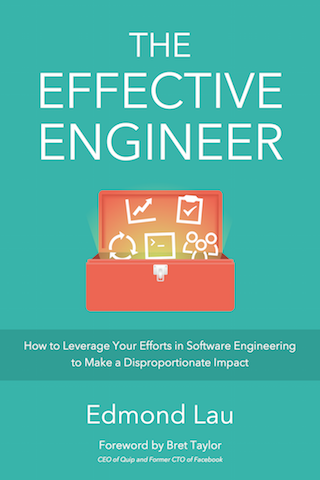Taking Ownership Is The Most Effective Way to Get What You Want

In 1967, American psychologist Martin Seligman discovered that our perception of control greatly shapes our choices and behavior. 1
In an oft-cited study, he subjected two groups of dogs to electrical shocks. In the first group, the dogs could press a lever to end the shock. In the second, the lever did nothing; the shocks appeared to continue for random durations, and the dogs in this group could do nothing to escape the shocks.
Seligman then placed dogs from the two groups in a partitioned box, where all they had to do to escape the shocks was jump over a low barrier from one side of the box to the other. Those in the first group quickly learned to jump the barrier. Those in the second just gave up and laid down — they had previously learned that they could do nothing to affect the situation.
This “learned helplessness” — a learned belief that you can’t do anything to affect negative events — has subsequently been confirmed in human studies as well.
How we explain negative events to ourselves therefore plays a huge role in our own behavior.
When we believe that negative outcomes in work and life result from external factors outside of our control, we feel helpless. We fail to see solutions that might just be a short hop away. When we instead take ownership for elements of the situation that we can influence, we empower ourselves to effect change.
We can use this idea to become significantly more effective at getting what we want.
Take Ownership of Your Problems
When things go wrong, we have two options.
We can find some environmental explanation or external scapegoat to blame. The project failed to ship on time because it turned out to be more complex than expected, because the product manager waffled on the requirements, or because the backend team we depended on didn’t deliver their work on time.
This is the easy route. For many people, this path is our default script. Ultimately, however, casting blame ends up wasting energy and distracting our focus. It might make us feel better in the short-term, but just like with learned helplessness, it gives us little control over outcomes.
What’s the alternative? We can choose to take ownership for our contribution to the problem. We can take responsibility for not sufficiently de-risking the project sooner, for not actively contributing to the biggest launch roadblock at any given time, or for not clearly communicating any changed assumptions as early as possible to key stakeholders.
This path is harder. Initially, this ownership mindset can even feel unfair. Why should I take responsibility for my part of the problem, especially if others aren’t taking responsibility for theirs?
The reality, however, is that we don’t control external factors nor the behavior of others. We only control our own behavior. Dwelling on what we can’t change therefore ends up being unproductive. Focusing on what we can change is the most effective way to produce meaningful results.
Fully embracing this philosophy leads to what Jocko Willink — a former US navy seal officer who led the most decorated special operations unit from the Iraq war — calls “extreme ownership.” In his book Extreme Ownership, Willink — now a leadership coach — explains that on a mission, the leader is ultimately responsible for all the successes and failures on the team. Regardless of whether poor training, inadequate equipment, unfair enemy tactics, or miscommunication might have played a role in a mission failure, there was no one to blame but himself for anything and everything that went wrong.
Perhaps counterintuitively, by removing ego from the picture and accepting full ownership for mission failures, Willink actually increased the level of respect his team and his bosses held for him. His team trusted that Willink was a leader who had their interests in mind and would never unfairly assign blame, and they learned to take ownership for their mistakes. His commanding officers understood that despite Willink’s mistakes, he was a commander who prioritized his team’s mission above his own personal agenda.
When something goes wrong, taking ownership is often the most productive explanation we can adopt to best achieve our goals. Any other explanation that reduces our responsibility also reduces our perceived level of control.
Putting the Ownership Mindset into Practice
So how do you put the principle of taking ownership into practice? Start by acknowledging your own contributions to mistakes made, and then ask yourself, “How might I …?”
When you’re blocked on another team, you can get frustrated and blame them for not finishing what you need on time. Or, you can figure out how to effectively help them so they’re able to help you accomplish your goals.
Ask yourself:
- How might I more clearly communicate why the task I care about is important and why it’s critical to have it done by a certain time?
- How might I provide additional information and tooling to help the other team more easily make progress on what I need?
- If they have higher and more urgent priorities, how might I help them finish their other work faster so they can help me sooner?
If your manager micromanages you and slows you down with approvals, you can complain about the constant oversight. Or, you can proactively communicate and push information upwards so that you start to build her trust in your work.
Ask yourself:
- Have I explicitly discussed with my manager what aspects of my work she cares about the most?
- How might I increase transparency by more regularly sharing progress updates so that she gets her most pressing concerns addressed?
- How might I preempt questions that she might have so that I have more space to work?
When your team fails to follow best practices and ends up costing everyone time, energy, or money, you can get upset at them for making a mistake. Or, you can take ownership for not communicating the reasons behind the recommendations clearly enough.
Ask yourself:
- How might I make the overarching priorities clearer for the team, so that teammates spend their energy in the areas that matter most?
- How might I more clearly explain why certain procedures and practices are in place?
- How might I introduce systems that incentivize the behavior I want?
Of course, in any situation, you might decide upon weighing the costs and benefits that it’s not worth expending the effort and energy to deal with a problem. Perhaps you decide that confronting that annoying co-worker isn’t worth the stress it might cause. Or that you’d rather work on fun engineering tasks rather than on what’s needed to ship a project sooner. That’s okay, as long as you accept that you’re explicitly making that choice. You take ownership of the negative consequences as ones you’re responsible for and willing to live with.
It’s okay to complain – sometimes we all need to vent or just have someone listen. But at the end of the day, what are you going to do about it? When you start focusing on what you can do differently rather than what others can do differently, you empower yourself to effect change.
So ask yourself, “How might I do things differently within my own sphere of influence to change the outcome?”
“Learned helplessness,”, Wikipedia. ↩

“A comprehensive tour of our industry's collective wisdom written with clarity.”
— Jack Heart, Engineering Manager at Asana
“Edmond managed to distill his decade of engineering experience into crystal-clear best practices.”
— Daniel Peng, Senior Staff Engineer at Google

“A comprehensive tour of our industry's collective wisdom written with clarity.”
— Jack Heart, Engineering Manager at Asana
“Edmond managed to distill his decade of engineering experience into crystal-clear best practices.”
— Daniel Peng, Senior Staff Engineer at Google


















Leave a Comment